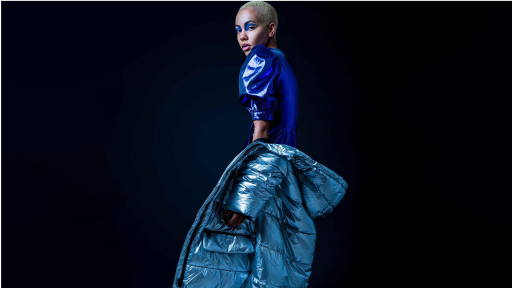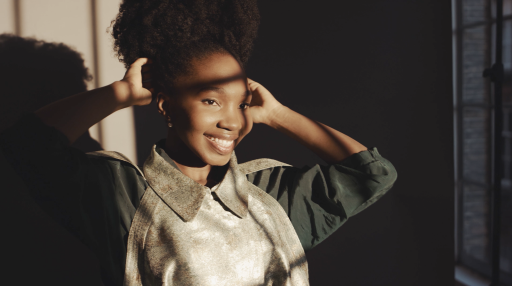Marketing and Merchandising for
Fashion-
100 Grads
collections showcased at International Fashion Gala -
100 Grads
showcased their collections at Paris Fashion Week -
500 Grads
showcased their collections at Vancouver Fashion Week
-
Diploma
-
60 Weeks
-
online
Program Overview
The Marketing and Merchandising for Fashion diploma equips students with a versatile skill set to thrive in the dynamic fashion industry. This comprehensive program covers essential competencies such as consumer behaviour analysis, strategic marketing planning, product life cycle management, retail channel optimization, and effective merchandising techniques. Graduates gain expertise in customer engagement, relationship management, market research, trend analysis, fashion styling, pricing strategies, and apparel production. With this foundation, they are prepared for diverse career paths in fashion, including roles in marketing, merchandising, brand management, consulting, and trend forecasting. They bring a valuable blend of creativity and business acumen to contribute to the ever-evolving world of fashion.
A diploma in Fashion Marketing and Merchandising opens up diverse career opportunities in the fashion industry. Graduates can pursue roles such as fashion buyer, retail manager, marketing coordinator, fashion merchandiser, fashion stylist, brand manager, trend forecaster, entrepreneur, and fashion consultant. With their comprehensive skill set and industry knowledge, graduates are well-prepared to make a significant impact in various fashion marketing and merchandising roles.
Admissions Prerequisites
High school graduation or equivalent (General Education Development or BC Adult Basic Education)*
* (From an institution where programs are delivered in English) OR
Mature student status **
** (19 years of age upon starting classes, and Pass college’s admissions test. Passing Score: 70% on the English component and an overall score of 70%)
Graduation Requirements
Successful completion of program courses with a CGPA of 2.0.
Successful submission of an industry standard professional portfolio to be presented at the quarterly portfolio show.
JOB OPPORTUNITIES
- Fashion Stylist
- Stylist
- Retail Space Planner
- Visual Display Assistant
- Marketing Assistant
SKILLS GAINED
- Use design theory to solve fashion design problems
- Create original garments that exceed industry design and quality standards
- Understand the relationship between fashion illustration, apparel design and product development
- Effectively communicate design ideas between various manufacturing, marketing and merchandising components of the industry
- Describe the role fashion history plays in fashion styling, design and display
- Analyze garment construction for quality, efficacy of design, and price point
- Understand the product development, apparel production, and textile life cycles
- Understand the importance of fashion forecasting on the design, marketing and merchandising of apparel
- Develop a portfolio containing original design work, flats and specifications, photographs, a promotional kit and a final themed collection consisting of at least four original garments
- The program consists of five 12-week terms. Most courses are worth three credits. 90 credits are required to complete this diploma program.
Courses Timeline
Colour and Design
Photoshop I
Fashion History: A Journey of Style and Revolution
Mastering the Craft of Fashion Writing
Textile Technology
Fashioning a Sustainable Future: Nurturing Ethics and Style
Fashion Forecasting: Unveiling Style Trends
Consumer Behaviour and Psychology in Fashion
Mathematics in Retail
Digital and Social Media Marketing: Crafting Engaging Content
Adobe Illustrator for Fashion
Public Relations in Fashion
Excel Essentials for Fashion Professionals
Fashion Entrepreneurship
Fashion Styling Unleashed
Brand Architect: Developing and Managing Identity
Innovations in Visual Merchandising
Buying and Merchandising in the Digital Age
Supply Chain Management
Retail Analytics and Business Intelligence
Cultural Navigation in Diverse Global Markets
E-Business Fundamentals with Shopify Certified Training
Fashion Event Management and Promotion
Fashion Production Management and the Technical Package
Portfolio and Professional Development
- Term 1
- Term 2
- Term 3
- Term 4
- Term 5
-
Colour & Design
This course will build students’ understanding of colour and design principles through exploration and application across media, visual, and applied practice. This course will introduce students to the fundamental principles of colour theory through design, such as layout, composition, balance, colour science and theory and teach them how to apply these principles. These concepts will be reinforced through specific practical exercises and activities that will...
-
Photoshop I
In this course, students will gain an understanding of the application and importance of image editing and construction as a universal skill in across diverse design genres. This course introduces students to raster image-editing software, Adobe Photoshop. Through this 'hands-on' course, students will acquire skills with workflow fundamentals, as well as advanced features, and tips, and acquire the skills to prepare images for digital output and print. Emph...
-
Fashion History: A Journey of Style and Revolution
Embark on a captivating journey through the ages of fashion history. Unveiling the threads of history, this 12-week exploration will transport you through centuries of style, power, rebellion, and global influence. From the opulent courts of Europe to the revolutionary designs of Coco Chanel and Alexander McQueen, immerse yourself in the stories behind iconic fashion movements and their impact on society. Delve into the rise of haute couture, challenge gender bound...
-
Mastering the Craft of Fashion Writing
Throughout history, clothing has fascinated writers, shaping a collective view of what fashion is using language. Through the examination of fashion text, the course explores memoirs,criticism, biographies, and journals, as well as editorials and copywriting, defining fiction, non-fiction, and journalism as it relates to fashion.
-
Textile Technology
This 12-week course provides Fashion Marketing and Merchandising students with a comprehensive understanding of textiles and technology in the fashion industry. Topics covered include sustainable materials, high-tech fabrics, environmentally friendly fabrics, health-driven fabrications, new manufacturing tools and technologies, 3D printing and knitting, fabric weaving, yarn systems, finishes, dyeing and printing, product end-use, fibre theory and classification, an...
-
Fashioning a Sustainable Future: Nurturing Ethics and Style
Sustainability is essential for the fashion industry to progress, and with the dramatic changes within the apparel industry in the past 20 years, fashion can no longer be taught without first examining the historical, social, and environmental aspects of the global fashion industry and the current tools and methodologies available to improve it. This course examines sustainability and fashion in the contexts of retailing, development, and marketing. The course will...
-
Fashion Forecasting: Unveiling Style Trends
Fashion Forecasting: Unveiling Style Trends is designed to provide students with a comprehensive understanding of fashion forecasting techniques and the practical application of Fashion Snoops a leading trend-forecasting platform in the fashion industry. Students will learn how to analyze and interpret current and emerging trends and apply this knowledge to predict future fashion directions.
-
Consumer Behaviour and Psychology in Fashion
This 12-week course deepens students' understanding of how psychology affects consumer behaviour in the fashion industry. It equips students with knowledge and analytical skills to predict and comprehend consumer attitudes, motivations, and decision-making in fashion consumption. The course explores psychological theories applied to fashion consumer behaviour, covering topics like attitudes, perception, motivation, personality, social influences, and decision-m...
-
Mathematics in Retail
This course covers a comprehensive range of topics related to retail math in the context of fashion marketing and merchandising. It incorporates elements of financial analysis, pricing strategies, assortment planning, inventory control, and data analytics. The course emphasizes practical application through case studies, real-world scenarios, and collaborative projects.
-
Digital and Social Media Marketing: Crafting Engaging Content
This course provides a comprehensive understanding of digital marketing strategies and techniques. Participants learn how to connect with customers, establish a strong online presence, and create engaging content. The course covers various topics, including marketing foundations, strategy development, target market identification, goal setting, and paid advertising. It also explores social media marketing, content creation, e-mail marketing, analytics, and communit...
-
Adobe Illustrator for Fashion
This course provides comprehensive training in using Adobe Illustrator for fashion, equipping students with the skills to bring their creative visions to life digitally. The course covers industry- specific tools and techniques, empowering students to develop a strong foundation in fashion illustration and digital design. The course also focuses on using Adobe Illustrator to create visually appealing marketing materials, digital assets, and fashion presentations.
-
Public Relations in Fashion
This comprehensive 12-week course provides students with an in-depth understanding of the role and significance of public relations in the fashion industry. It equips aspiring fashion PR professionals, marketers, and individuals interested in fashion communication with the necessary skills to excel in the dynamic world of fashion PR. The course covers fundamental concepts such as communication strategies, brand positioning, media relations, event management, and cr...
-
Excel Essentials for Fashion Professionals
This course is designed to equip fashion professionals with the necessary skills to effectively utilize Microsoft Excel. Students will learn the fundamental functions, formulas, and features of Excel and explore practical applications specific to the fashion industry. Through hands-on exercises and real-world examples, students will develop proficiency in data analysis, inventory management, sales forecasting, budgeting, and other essential tasks.
-
Fashion Entrepreneurship
This course is designed to provide students with the knowledge and skills needed to start and manage a successful fashion business. Throughout the 12-weeks, students will explore various aspects of fashion entrepreneurship, including market research, product development, branding, e-commerce, operations, and marketing. The course will culminate in a final presentation where students will showcase their business plans and strategies.
-
Fashion Styling Unleashed
Fashion Styling Unleashed equips students with the essential skills and knowledge needed to excel as fashion stylists. Learn the significance of fashion styling, develop key skills, and explore the role of the stylist as a cultural gatekeeper and storyteller. Learn about body proportions, silhouette coordination, design principles, and creating visually perfect outfits. Gain insights into print styling, editorial shoots, client wardrobe management, portfolio buildi...
-
Brand Architect: Developing and Managing Identity
Explore the world of brand development and management in the dynamic fashion industry through this course. Gain a comprehensive understanding of key concepts and strategies for building strong fashion brands. From crafting brand identity and positioning to implementing effective communication and promotion strategies, students will learn how to create engaging brand experiences and foster customer loyalty. Topics covered include consumer behaviour, retail operation...
-
Innovations in Visual Merchandising
This course explores the evolving field of visual merchandising, with a focus on forward-thinking changes in the industry. Students will delve into topics such as sustainability, equality, inclusion, technology, and current trends, gaining insights and the skills necessary to create impactful displays. Through a combination of theoretical knowledge, practical exercises, and case studies, students will learn to attract attention with effective design principles, con...
-
Buying and Merchandising in the Digital Age
This course prepares students for success in fashion buying. It provides the essential knowledge and skills to excel in the field. Students will gain insights into consumer behaviour and market trends, learning how to conduct research, analyze insights, and apply trend forecasting techniques. The course also covers important topics like ethical sourcing, sustainable production, fair trade, diversity, and inclusion. Key areas such as vendor selection, pricing strate...
-
Supply Chain Management
Explore the crucial role of supply chain management in the fashion industry where students learn to understand the fashion supply chain, including forecasting, sourcing, production, inventory management, logistics, and retail operations. Learn data-driven strategies and digital innovations for efficiency, cost reduction, and sustainability. Topics include demand planning, supplier management, inventory optimization, e-commerce integration, and omni-channel fulfilme...
-
Retail Analytics and Business Intelligence
Retail Analytics and Business Intelligence is a comprehensive course that explores the role of analytics in the retail industry, emphasizing its impact on business decision-making. Learn about data-driven strategies, real-world examples, and the benefits of analytics for driving business performance and growth. Gain insights into data collection, management, key retail metrics, data analysis techniques, predictive analytics, retail dashboards, data visualization, a...
-
Cultural Navigation in Diverse Global Markets
This comprehensive course explores the cultural landscape's influence on market demand, emphasizing cultural sensitivity and ethical considerations in fashion marketing. Delve into global marketing strategies, challenges, and the dynamic nature of fashion marketing. Learn about the role of politics, law, and economics, harness the power of research, and develop strategies for multinational markets. Gain insights into cross-cultural advertising, integrated marke...
-
E-Business Fundamentals with Shopify Certified Training
Master e-commerce with the E-Business Fundamentals and Shopify Certified Training course. Learn core principles of online business and gain hands-on experience with Shopify, the leading e-commerce platform. Explore various business models, optimize websites for SEO, and implement digital marketing strategies. Unlock the power of Shopify for payments, store design, shipping, and taxes. Enhance visibility through on-page SEO and analyze data with Google Analytics. St...
-
Fashion Event Management and Promotion
This comprehensive course is designed to provide fashion students with the knowledge and skills necessary to successfully organize, manage, and promote fashion events and shows. Students will explore the key elements involved in planning and executing fashion events, including event logistics, production, promotion, branding, and sustainable practices. Through theoretical concepts, practical assignments, and hands-on projects, students will gain the necessary exper...
-
Fashion Production Management and the Technical Package
Explore the intersection of creativity and innovation with this 12- week comprehensive course. Students will gain essential skills and knowledge to bring their fashion ideas to life while integrating sustainable practices throughout the process. From market research to design, prototyping to sourcing, and quality control to distribution, learn how to create stylish and environmentally responsible products. Join in and shape the future of fashion through product dev...
-
Portfolio & Professional Development
Students develop the tools and skills required to present themselves professionally and succeed in the fashion industry. Outcomes include a professional digital portfolio, a portfolio presentation, an industry-standard resume, an industry-standard job application cover letter template, the ability to conduct a winning job interview, networking skills, a professional LinkedIn, and the ability to use social media strategically for professional purposes. This course w...
Costs & Requirements
For tuition prices and costs, fill out the request info form to speak with an admissions representative.
VCAD's Refund Policy abides by the Private Training Regulation of the Private Training Institutions Branch (PTIB) Private Training Act.
For more information, click here.
Check out and connect with some Alumni on LinkedIn.
-
 Noel Gabriel Ambrosio
2020
Noel Gabriel Ambrosio
2020
-
 Nikki
Katouzian
2022
Nikki
Katouzian
2022
-
 Dryden
Sereda
2022
Dryden
Sereda
2022
-
 Madison Prangnell
2020
Madison Prangnell
2020
-
 Tuong Kim Thuy Nguyen
2020
Tuong Kim Thuy Nguyen
2020
Student Testimonials
-
If it wasn't for VCAD I don't think I would be where I am today. I've had some amazing opportunities, I've met some wonderful people - amazing connections, and I'll be forever grateful.
- Sabrina Laprise -
The most important thing that I learned at VCAD was how to use software - graphic design software.
- Ewa Wawryszuk -
What drew me to the interior design program was that it was a creative industry and also that it's business oriented.
- Luc Kwan -
I chose VCAD because of all the options and programs that they offered, and I wanted to succeed and through not just my classes but also making like really cool things that I'm proud of.
- Luke Johnston -
The instructors are really helpful, even outside school projects. They gave me a lot of advice about improving my skills as a graphic designer.
- Maricel Benjamin -
The most valuable part of the program is the one on one time with the teachers. They are always willing to go out of their way to make sure you understand what you are doing.
- Katrina Selkirk
Meet our Instructors
-
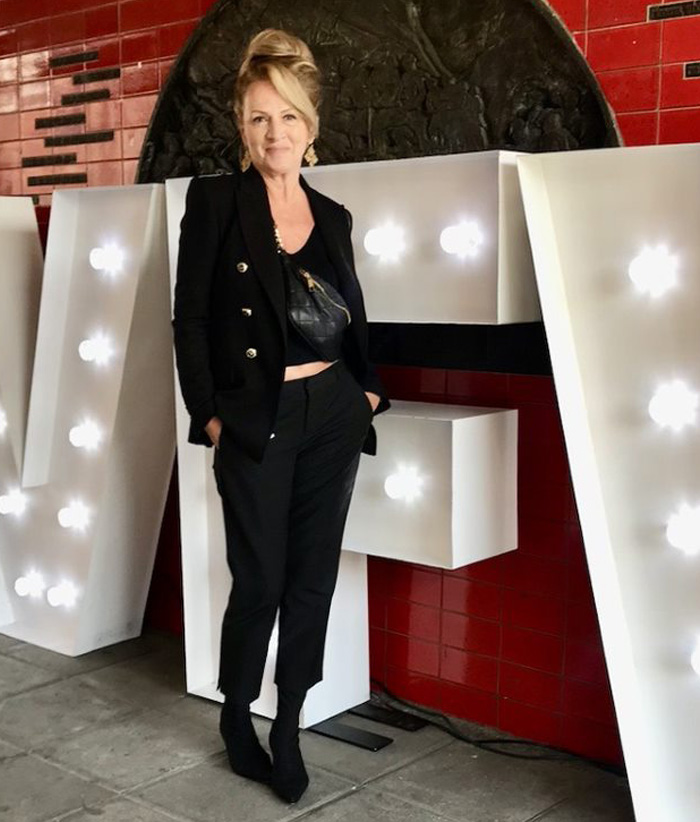
Julie Berg
Marketing and Merchandising for Fashion
-
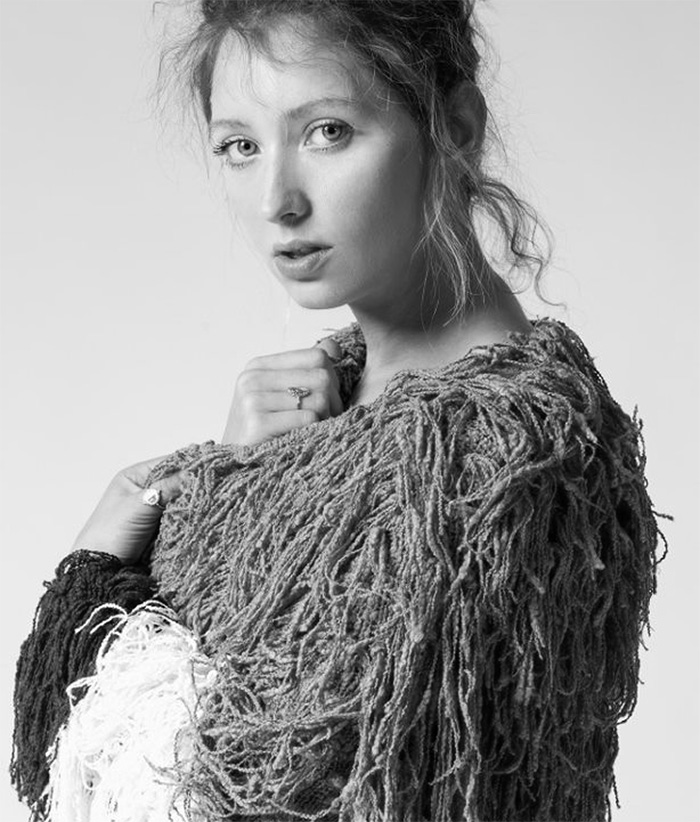
Victoria Patterson
Marketing and Merchandising for Fashion
-
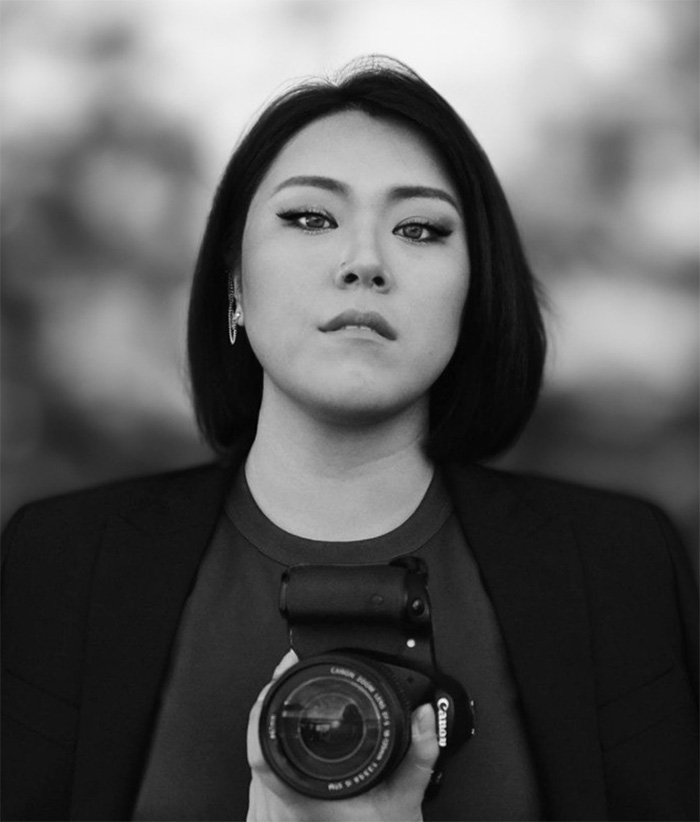
Alice Scheuerman
Marketing and Merchandising for Fashion
Explore More Programs
Would you like to get more information or apply?
Click on the button below and we’ll get back to you as soon as possible.


